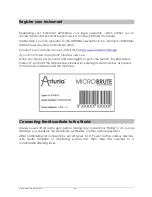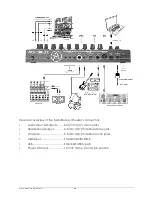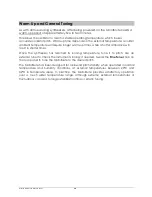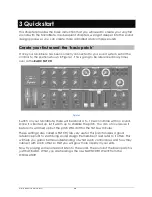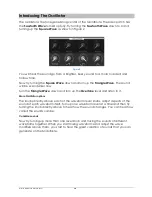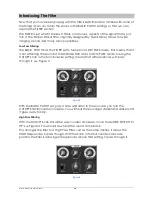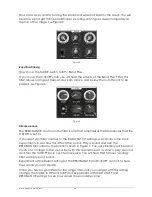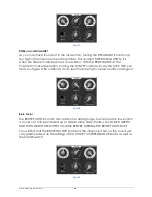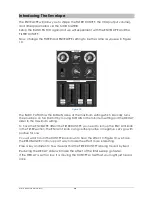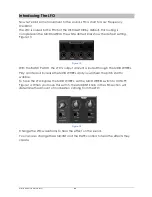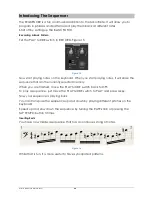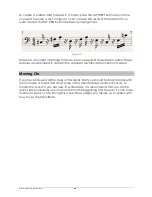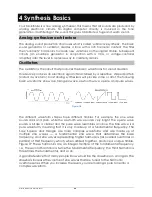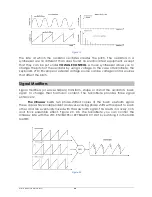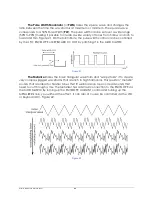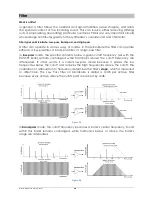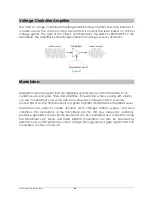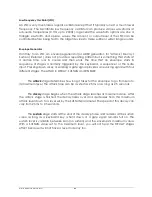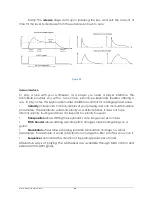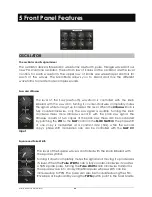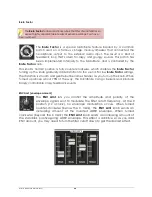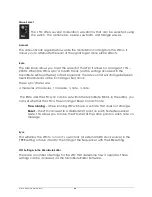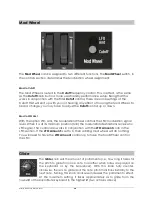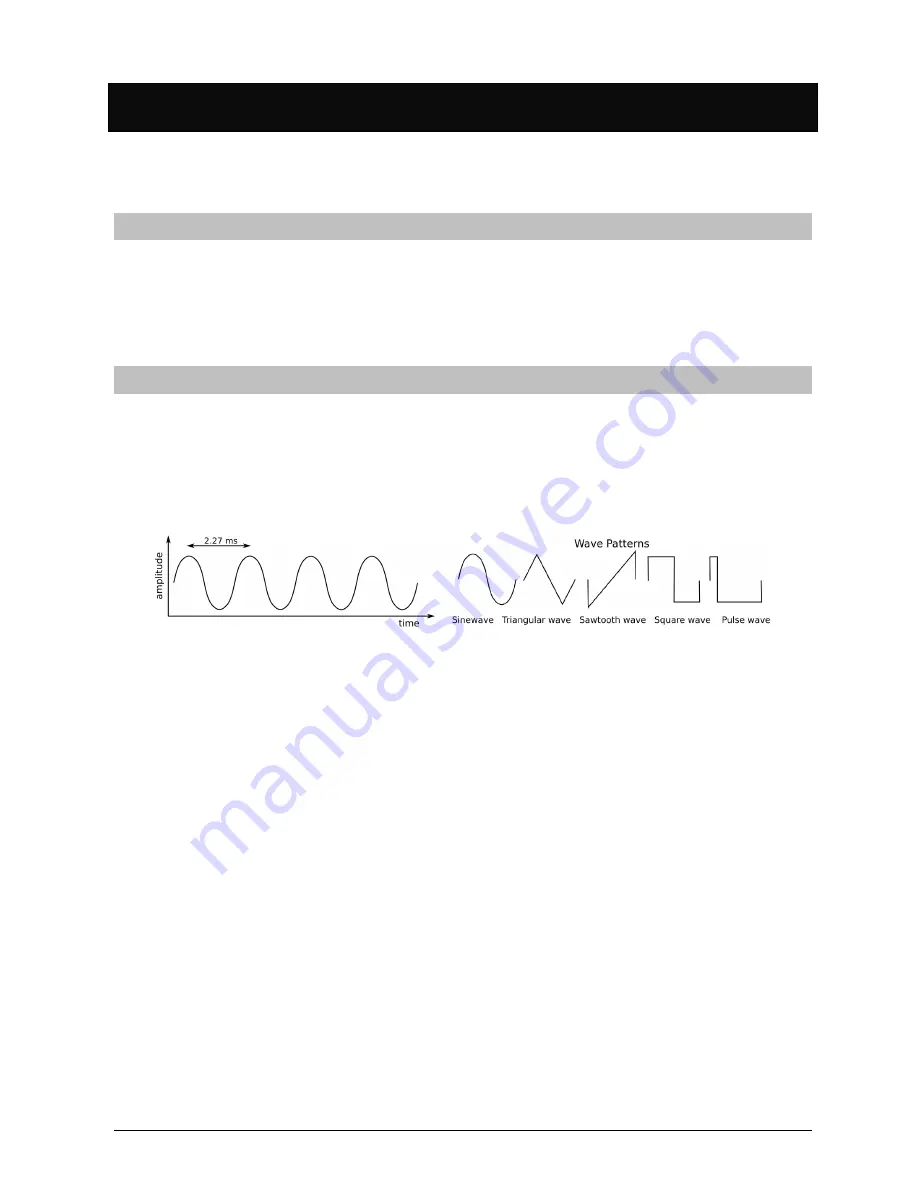
Arturia Microbrute User’s Manual
25
4 Synthesis Basics
Your MicroBrute is a true analog synthesizer, this means that all sounds are produced by
analog electronic circuits. No digital computer circuitry is involved in the tone
generation, and filtering of the sound. This gives MicroBrute a huge and warm sound.
Analog synthesizer architecture
The analog sound production chain uses what is called ‘subtractive synthesis’. The basic
sound generator, or oscillator, creates a tone with a rich harmonic content; the filter
then “subtracts” harmonics to create new variations on the original timbre. Subsequent
circuits (an envelope generator in conjunction with a VCA, or voltage-controller
amplifier) alter the level in a precise way to create dynamics.
Oscillators
The oscillator is the circuit that produces the basic waveforms for sound creation.
This device produces an electronic signal characterized by a repetitive, shaped pattern
(called a waveform). Most analog synthesizers will provide some or all of the following
basic waveforms: sine wave, triangular wave, sawtooth wave, square, and pulse waves.
Figure 18
The different waveform shapes have different timbres. For example, the sine wave
sounds dark and plain, while the sawtooth wave sounds very bright. The square wave
sounds a bit like a clarinet and the pulse wave resembles an oboe.
The Sine wave is a
pure waveform, meaning that it is only made up of a fundamental frequency. The
Saw, Square and Triangle are more complex waveforms and are made up of
multiple sine waves — a fundamental sine wave that determines the base
frequency, and sine waves representing higher harmonics (also called overtones or
partials) of that frequency which, when added together, produce a unique timbre.
Figure 19 These harmonics are an integer multiple of the fundamental frequency,
i.e., the second harmonic is twice the fundamental frequency, the third harmonic is
three times the fundamental, and so on.
A good reference that many people know would be the drawbars on an organ. The
drawbars increase the volume of sine waves that are tuned to the harmonic
overtone series. When you increase the levels, you are making a pure tone into a
complex waveform.

